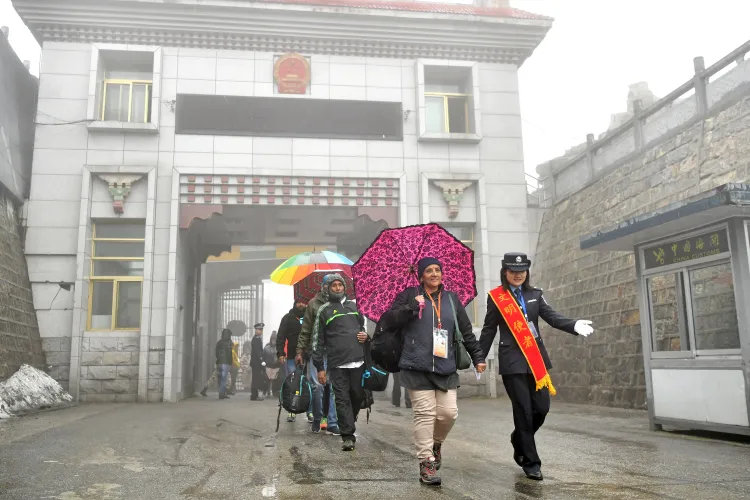Has China's military aggression impacted border trade through Nathu La?

Synopsis
Key Takeaways
- 400 families are struggling due to border trade closure.
- The trade stoppage began in 2020 following military tensions.
- The official reason for the halt is disputed; real cause attributed to China's aggression.
- Tibetan traders and laborers are facing severe financial hardships.
- Calls for alternative employment have been made to the Sikkim Government.
Kathmandu, Aug 18 (NationPress) Approximately 400 families that rely on trade between Sikkim and Tibet are currently experiencing significant challenges due to the ongoing closure of the border, which has adversely affected the everyday lives of individuals on both sides, as detailed in a recent report.
The flourishing border commerce via Nathu La and the other two routes—Lipulekh Pass in Uttarakhand and Shipki La pass in Himachal Pradesh—came to a standstill in 2020 following violations of numerous bilateral protocols by the Chinese military in eastern Ladakh.
“Formally, the reason cited for the halt in border trade is the pandemic; however, it is evident that the pandemic has long subsided while trade has been suspended for nearly five years. The underlying cause of this trade suspension is the aggressive actions by China at the border, initiated in 2017 with the incursion in the Doklam Plateau in Bhutan, which is in proximity to Nathu La,” reported Nepal's online news portal Hamrakura.
According to Tshephel Tenzing, the General Secretary of the Nathu La Border Trade Association, the persistent Chinese aggression along the border with India has inflicted suffering and challenges for the local populace in the trans-Himalayan region.
Tenzing noted that Tibetan traders and laborers have also been grappling with financial difficulties since the trade closure.
“He (Tenzing) had discussions with Tibetan traders at the trade marts when trading was operational. The financial situation of these Tibetans had notably improved since the initiation of border trade. Most Tibetan laborers involved in this trade hailed from Tromo County, part of the Shigatse prefecture in the plateau. They could only travel to the Indian trade mart at Sherathang, unlike the Chinese traders involved in the border trade. The Tibetan traders and laborers in Tromo County have borne the brunt of the Nathu La border trade shutdown,” elaborated the report.
The Border Trade Association indicated that 400 trade passes were annually issued to Sikkim traders for commerce with Tibetan merchants. The association has now reached out to the Sikkim Government to seek alternative employment for these traders.
“Around 150 drivers transporting goods from Gangtok to the Sherathang trade mart on the Indian side and Rinchenpong on the Tibetan side are facing income losses due to the trade closure. Some have resorted to driving taxis and buses along the mainline passenger routes in Sikkim,” the report concludes.










